After the commercialism craze of Black Friday and Cyber Monday is over, GivingTuesday is a day to help us all refocus. So, what exactly is GivingTuesday? Well, quite simply, it’s a day dedicated to fostering a spirit of selflessness and philanthropy.
Since its start in 2012, GivingTuesday—which occurs on the first Tuesday after the U.S. Thanksgiving holiday—has developed a solid reputation as the global day of giving. The campaign is undoubtedly effective. In the United States alone, GivingTuesday 2023 witnessed a staggering $3.1 billion in contributions the day of with 34 million participating individuals.
With its own hashtag, it comes as no surprise that GivingTuesday gains a lot of its traction on social media. So, if you’re considering launching a GivingTuesday fundraising campaign, having a strong presence on social media is a no-brainer for success.
We understand that the GivingTuesday social media landscape can be a little intimidating, and coordinating your efforts across platforms in order to get the most impact can be a challenge. Luckily, there are a few strategies CauseVox has put together so that you can become a GivingTuesday social media master. Check out these eight tips, and prepare for major engagement from both old and new supporters!
Free Download: Year-End & GivingTuesday Fundraising Toolkit
1. Storytelling
Storytelling possesses an unparalleled power to ignite empathy, drive action, and foster connection – making it an indispensable tool for your GivingTuesday social media campaigns. And in order to tell stories effectively you need to understand who your audience is.
Define Your Desired Donor
First, start by figuring out who your ideal donor is for your GivingTuesday campaign. You can use tools like surveys, interviews, or data analytics to understand this (more on that below). Segmentation through demographics like age, location and interests are also helpful ways to understand your donors and create stories that will resonate with the different types of target audiences.

An example of storytelling in a Raising Hope Dogs GivingTuesday social media fundraising campaign.
Tell Stories That Convert
Secondly, it is crucial to craft stories that speak to your donors desire to help as well as exemplify what impact their involvement will have on your cause. Remember that your donor is the hero, you are simply guiding them through the process and providing an opportunity for them to create meaningful change in the world. As you can see with the Raising Hope Dogs Giving Campaign, sharing photos and personal stories are key to engaging donors and mobilizing them into action. Joshua was running a peer-to-peer fundraising campaign and was able to share his own personal story of impact to invite others to give to a worthy cause!

Sharing beneficiary stories is a powerful way to connect with your donors and showcase their impact.
Share Something Personal
Finally, the most impactful stories are ones stemming from those that your organization serves. Our 2023 Giving Study shows that real-life stories increase the likelihood of a charitable donation and spur donors to take action. Just of the few things we recommend exploring include:
- Transparent Narratives: Share both the successes and challenges of your project. People are drawn to authenticity and donors understand that things don’t always go smoothly, so be real, raw and honest.
- Beneficiary Testimonies: Stories from those you serve are profoundly impactful on donors. However, when using stories from your beneficiaries it is important to always ask permission and co-create the narratives together. When crafting the story with your beneficiaries, consider asking questions like, “How do you want the story told?” or “What would you want the world to know?”
2. Study Social Media Analytics
Monitor Analytics Diligently
This means tracking your website and social media metrics like page views, click-through rates, and the time spent on various sections of your website and social media platforms. These metrics can unveil which stories or content pieces resonate most with your audience. Understanding which narratives receive the most engagement allows you to tailor your storytelling to match the preferences of your supporters, ensuring that your messages align with what captures their attention.
Say you want to engage the younger generation, who are in fact steadfast and increasingly generous in their commitment to philanthropic endeavors; our Giving Study found that 50% of Gen Z donors are keen on amplifying their charitable contributions in the upcoming year In order to understand how to reach them amidst all the GivingTuesday campaigns, you can start to track how they engage online. Because many website and social media platforms allow you to organize data by age range, you can study their click through rates on your website, what campaigns have converted young people to donors and how they gave, and how they interact with your social media on different platforms.

We have access to detailed data about our Facebook & Instagram engagement thanks to Meta’s analytics
Leveraging data analytics on GivingTuesday can be a game-changer in your quest to boost donations and enhance the effectiveness of your fundraising efforts. One vital application of data analytics is in informing your storytelling strategy. By closely examining the data generated by your organization, you gain valuable insights into the preferences and interests of your audience.
Utilize Analytics Effectively
Take advantage of the donor feedback you’ve collected. Analyze donor surveys, comments, and any direct communication you have with supporters. Their input can provide a wealth of information about what aspects of your organization’s work resonate with them on a personal level. This feedback can help you fine-tune your narratives to focus on the elements that donors find most compelling and meaningful.
Incorporating data analytics into your GivingTuesday strategy not only helps you refine your storytelling but also enables you to measure the impact of your efforts. You can track changes in donor engagement, conversion rates, and donation amounts over time, allowing you to continuously adapt and optimize your storytelling approach for maximum impact. Ultimately, using data-driven insights to shape your narratives ensures that you effectively connect with your audience, driving increased donations and support for your cause.
3. Create a Video on Social Media
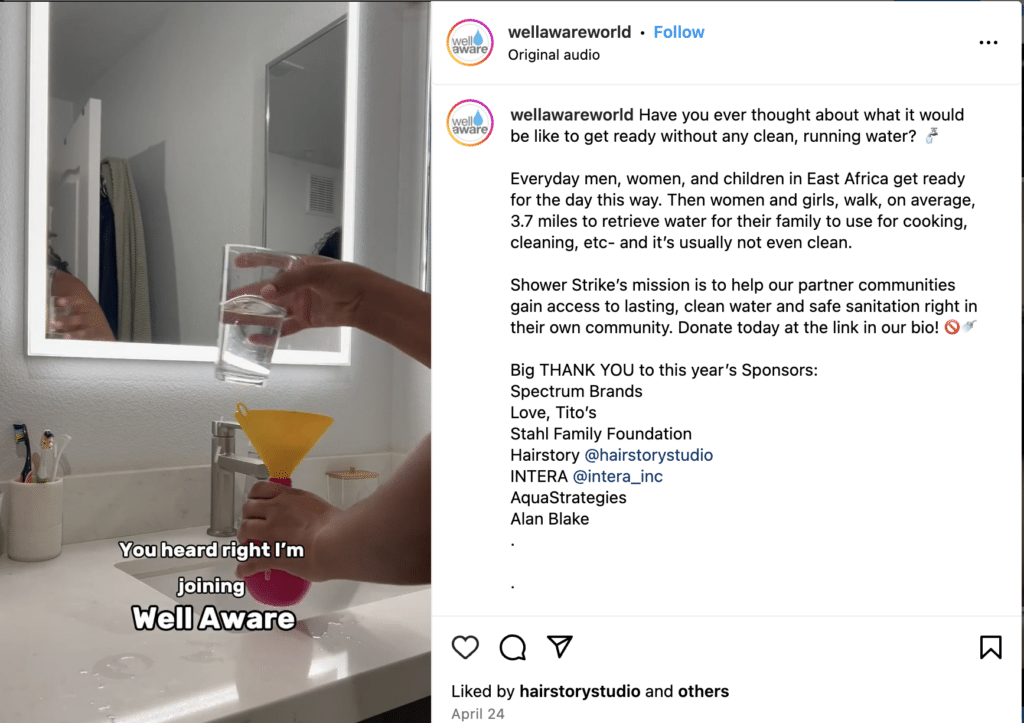
Creating content like Well Aware did on Instagram Reels is a great way to engage your Gen-Z donors.
While every audience is different, and you know your community of supporters best, few can argue with the fact that videos tend to perform remarkably well across all kinds of platforms from campaign pages, to social media, to your website.
What does this mean for you? Well, a short and memorable video about your GivingTuesday campaign like Well Aware did for their GivingTuesday campaign last year (shown above) could have a huge impact. Whether you want your video to make people laugh or to tug at their heartstrings, a short video is both powerful and shareable—and with platforms like TikTok and Instagram Reels these short clips can be seen and shared widely.
Your video doesn’t need to be anything overly complicated or extremely professional. Do not underestimate the power of simple, authentic, transparent videos that capture the importance of your everyday work. For instance, you can film short clips of staff or beneficiaries saying thank you, sharing one sentence about the impact of a donor’s gift or explaining the challenges your organization is currently facing, and how others can help.
Need some tips for putting together an effective video? Check these out, and find more tips right here:
- Ask yourself, “Why would people share this video?” before you ever even start filming.
- Whether your video is a tearjerker or one that makes people laugh out loud, it’s important to appeal to emotions.
- Keep it short. Between three and four minutes about as long as you want to go.
4. Start GivingTuesday Social Media Posts Early
There’s no rule stating that you can’t start promoting your GivingTuesday campaign long before the day actually occurs. So, use time to your advantage and start planning and promoting your campaign early on.
First, get your campaigns ducks in a row by determining your fundraising goal, identifying your story, and setting up your fundraising site. Begin posting about your campaign on your social media accounts in early to mid November in order to generate some proactive buzz and donations!
Then, engage your key supporters and arm them with the knowledge and tools they need to start promoting your campaign right now. In the CauseVox 2023 Giving Study we found that 71% of donors are willing to aid in fundraising activities, especially those in the younger generations. Harness the power of those willing donors to amplify your fundraising efforts by equipping them with the tools they need to promote your GivingTuesday campaign early. We will discuss how to create a fundraiser toolkit below.
5. Make Your GivingTuesday Campaign Your Own
Feel free to get creative with how you spin your campaign. This could include a campaign with a matching grant to double your GivingTuesday impact or you could crowdsource your donors through peer-to-peer fundraising pages.
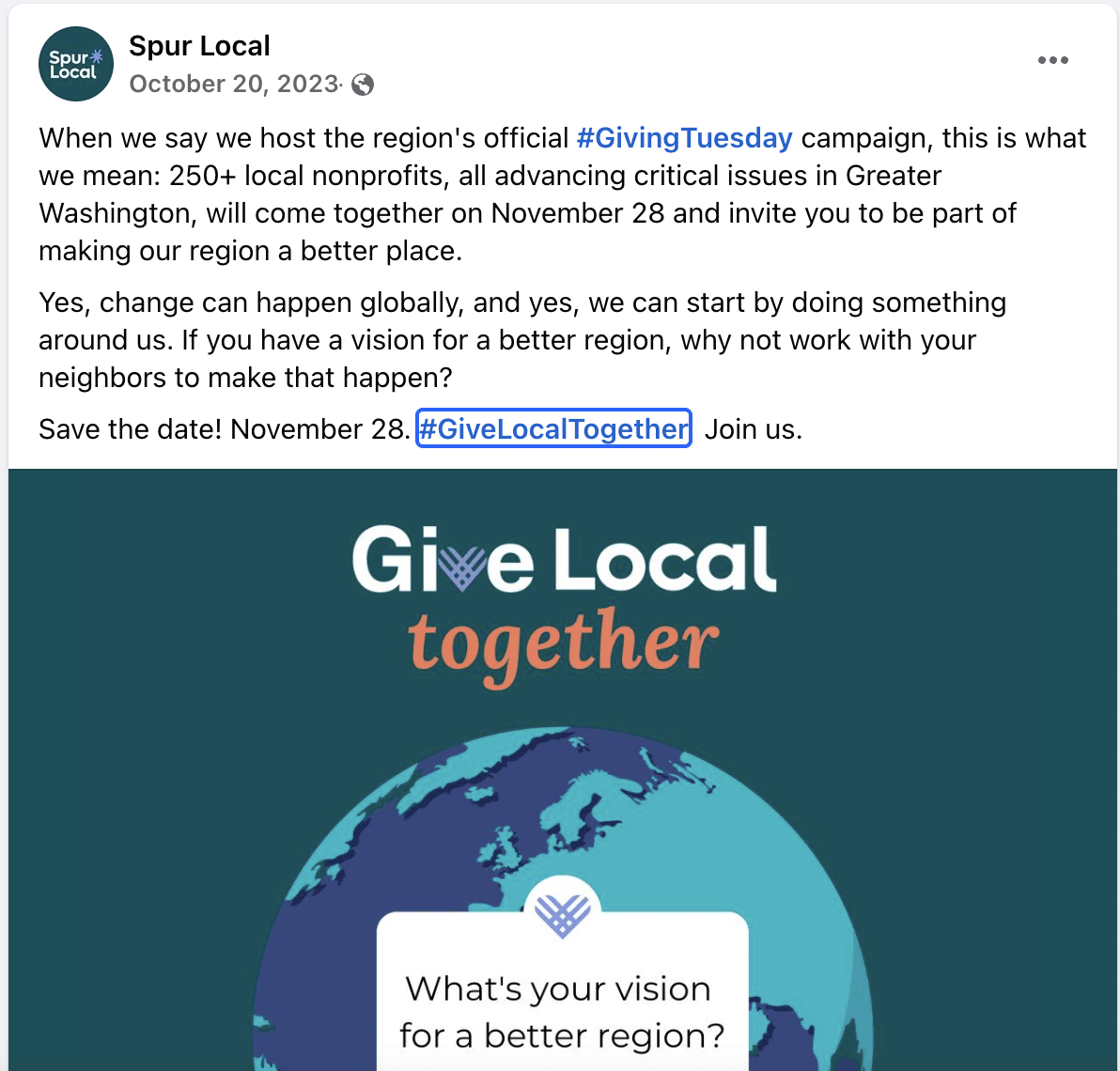
Spur Local’s Give Local GivingTuesday campaign.
Many organizations also opt to rebrand the GivingTuesday hashtag to something that fits more with their particular mission, such as Spur Local’s successful Give Local campaign.
Another idea is to offer transparent, real time impact reports on GivingTuesday and showcase live updates on how each donation directly contributes to the good work you do. Our 2023 Giving Study found that transparency is the new standard of trust-building in this charitable landscape. From Boomers to Gen-Zers, people like to know where their funds are going and how they are being used. An easy way to do this is through graphics, or an impact meter, or donation tiers.
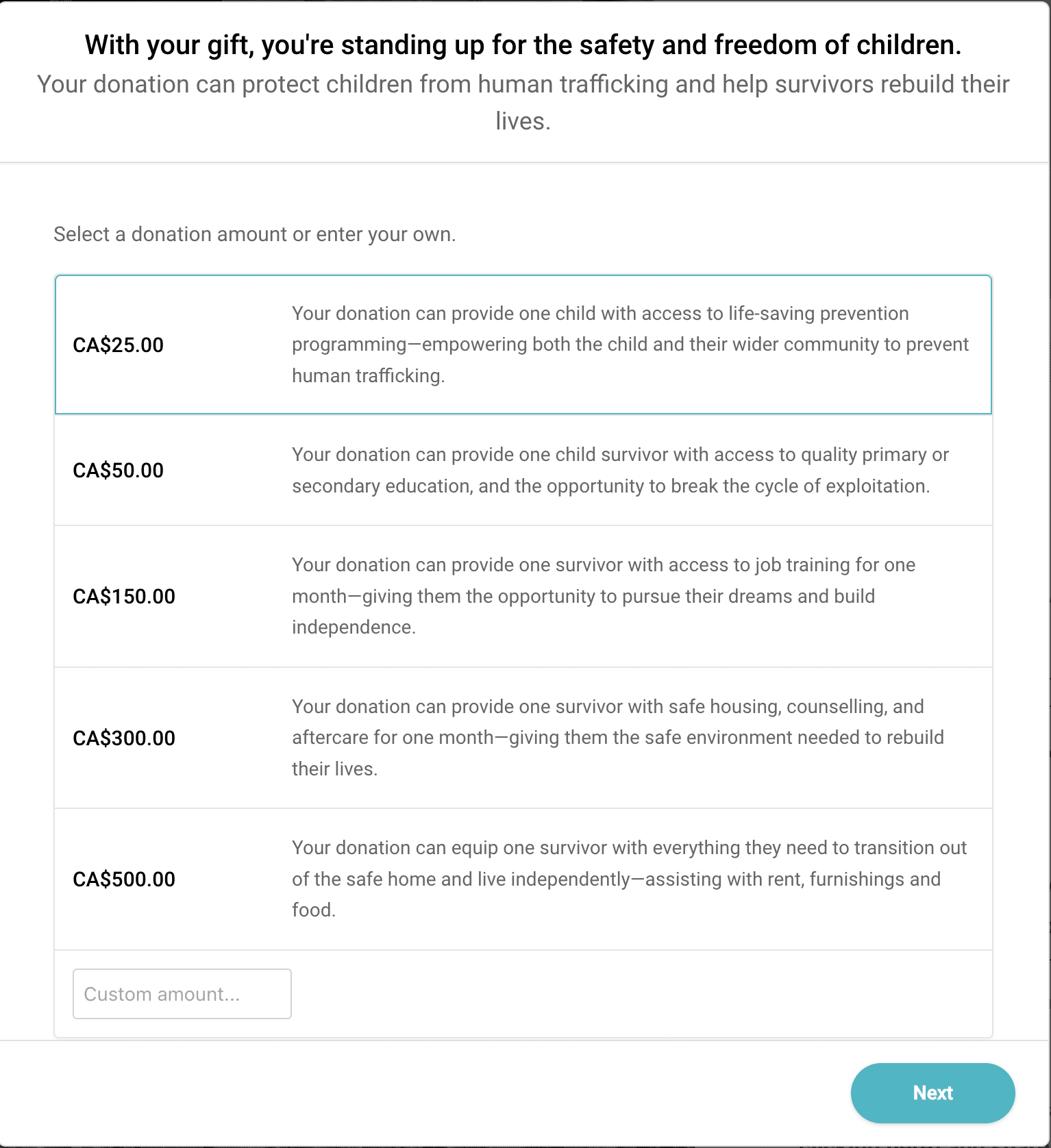
Ally Global’s Move For Freedom Donation Tiers
There are many ways to run a successful GivingTuesday campaign, you just need to find what works for you, and run with it!
6. Create a GivingTuesday Social Media Toolkit
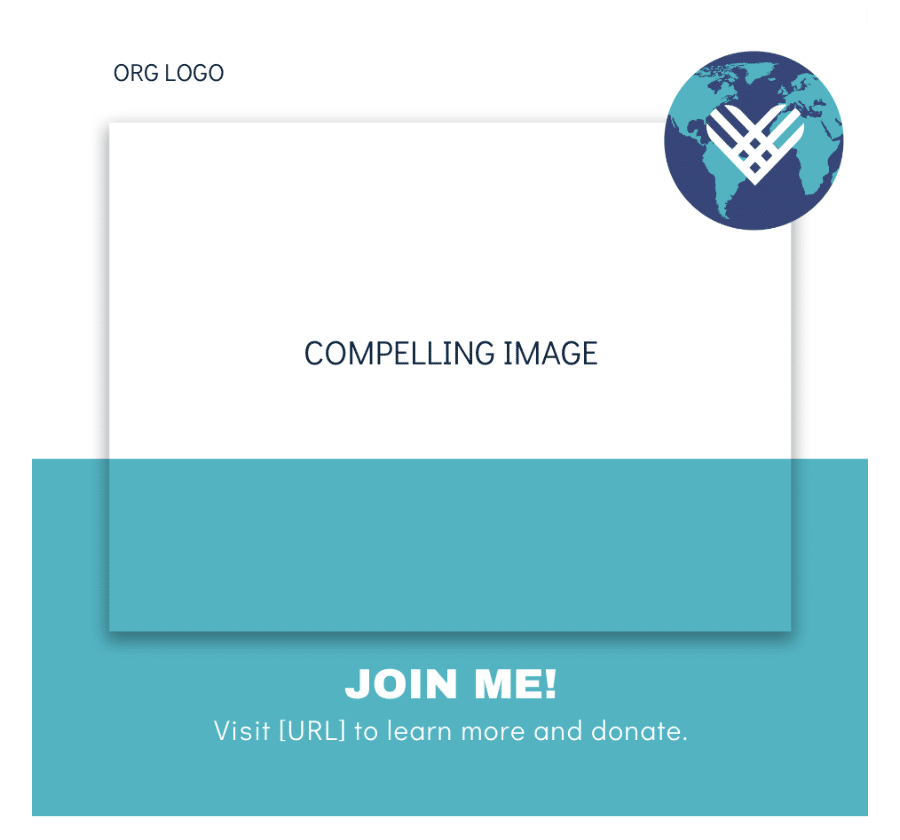
Utilize CauseVox’s free GivingTuesday social media templates toolkit.
If you want to get the most impact out of your network of supporters, you need to ensure that they’re adequately informed. How do you do this? Give them the best tools and resources to utilize in their own GivingTuesday social media posts. Similarly to how GivingTuesday offers a social media toolkit for participants, consider creating one for your own audience to make use of.
Whether or not you’re using peer-to-peer fundraising in your campaign, your toolkit can include everything from infographics, images, and logos to links, campaign hashtags, and suggested messaging. This makes it easier for your supporters to accurately spread the word about your mission, which makes them even more inclined to actually do so!
7. Be Actively Engaged on Social Media
There’s one big thing that separates social media from all other forms of promotion and advertising: it’s social. This means it involves more than just shouting out your message and hoping someone hears it. It’s about conversation, connection, and community. You simply can’t expect your supporters to be engaged with your campaign if you refuse to be engaged with them.
Don’t plan on blanketing the world with GivingTuesday social media posts while refusing to do any of the other legwork. In order for your social presence to be effective, it’s imperative that you’re actively engaged with your supporters. You can keep donors engaged by providing updates throughout GivingTuesday like New Vocations does.
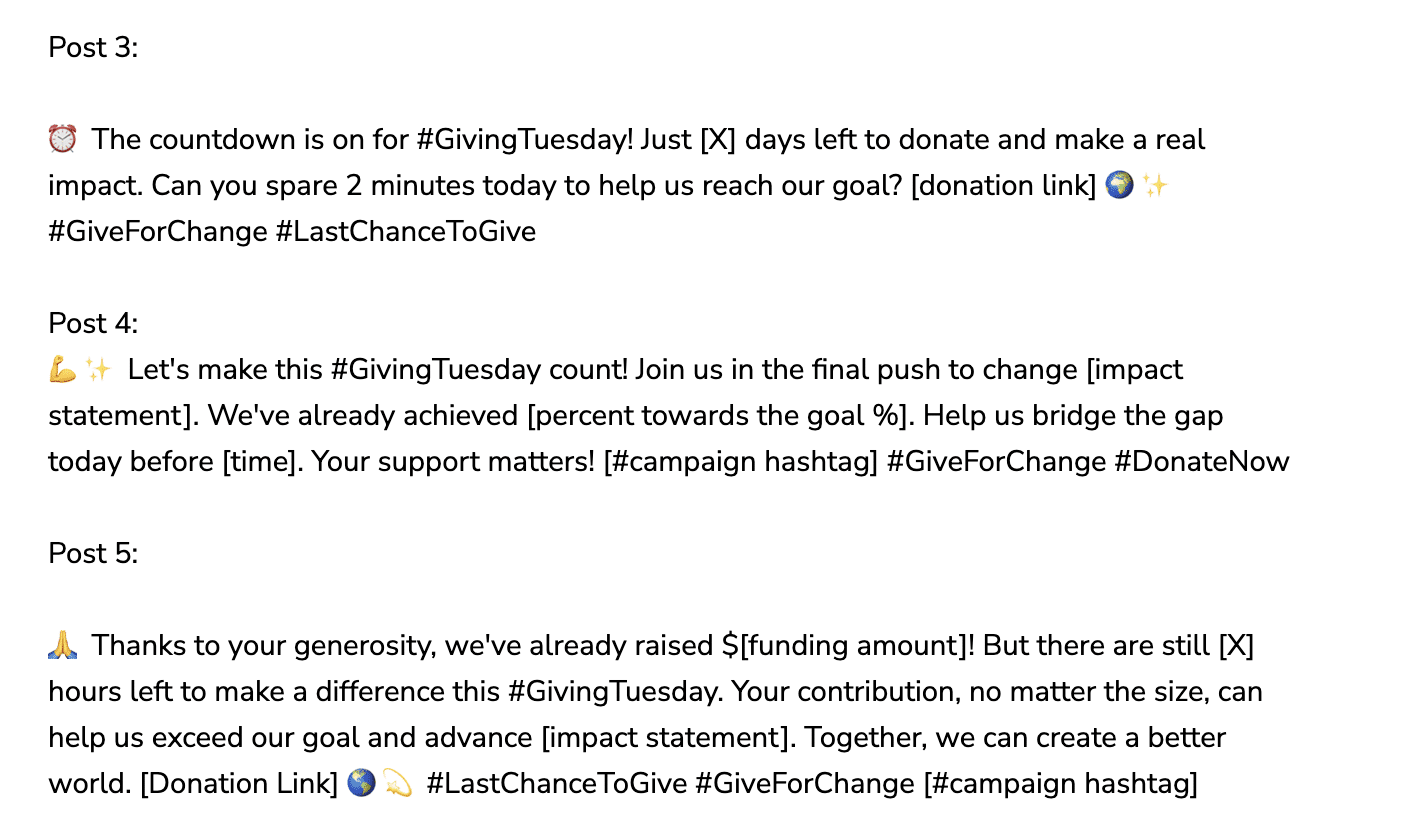
More free templates included in CauseVox’s GivingTuesday toolkit.
Thoughtfully respond to their comments. Publicly thank them for their support. Always make time to continuously foster conversations and a sense of community. Trust me, it goes a long way!
8. Find Innovative Ways To Engage Your Audience
To stand out from the noise, think about making your GivingTuesday social media fun and interactive! You could do something like a quick poll or a quiz in your Instagram stories, or even challenge your followers to share why they support your cause using a custom hashtag.
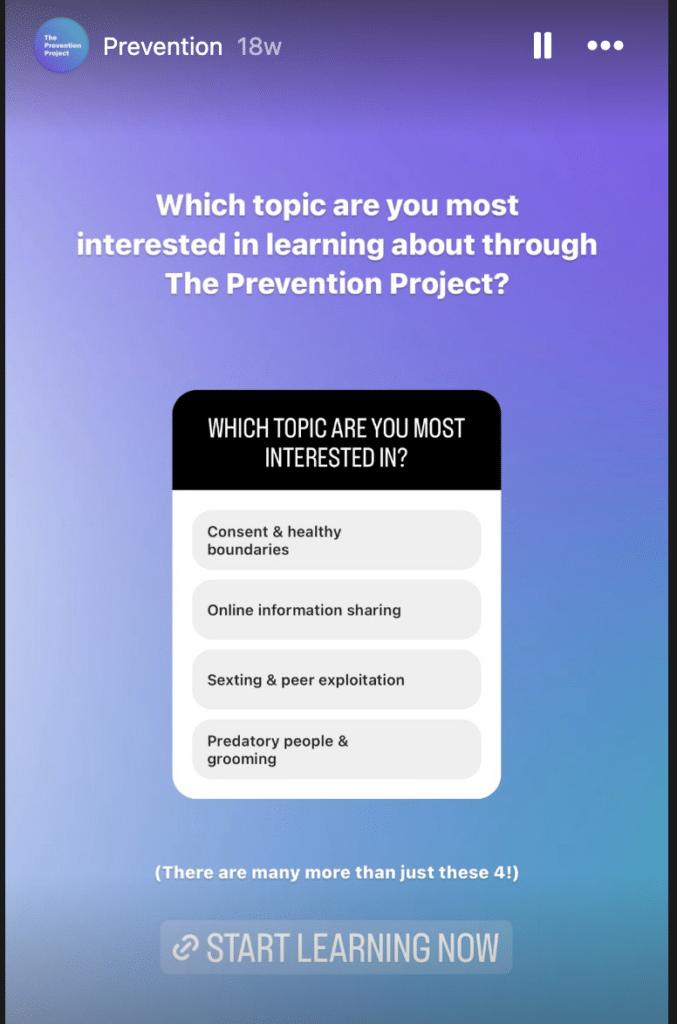
Ally Global used Instagram Stories to engage their audience and also learn what their interests are.
Going live is also a great way to bring people in—maybe show some behind-the-scenes action or do a quick interview with someone who’s been impacted by your work. Don’t forget to get your community involved! Encourage your supporters to post their own stories or use branded templates you create. It’s all about making it personal and creating those little moments of connection.
There’s no doubt about it—GivingTuesday is a day of giving that lives and breathes on social media. So, in order to set your own campaign up for success, you need to be active in that space. Put these tips to work in order to build a powerful social presence for your GivingTuesday campaign that boosts your sense of community—and your amount of donations! Get started with CauseVox’s free GivingTuesday social media templates included in the toolkit below.
Download the free Ultimate 2024 Year-End & GivingTuesday Fundraising Toolkit:
This post was updated for freshness, accuracy, and comprehensiveness in October 2024.




